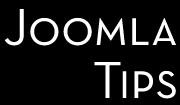hacking
-
Resource Injection
This attack consists of changing resource identifiers used by an application in order to perform a malicious task. When an application permits a user input to define a resource, like a file name or port number, this data can be manipulated to execute or access different resources.
-
RFI/LFI
Remote File Inclusion (RFI) is a type of vulnerability most often found on websites. It allows an attacker to include a remote file, usually through a script on the web server. His pair, Local File Inclusion or LFI is basically the same technique, used on sites which have been successfully penetrated, and the hacker "planted" his files already on the server.
-
SQL Injection
One popular and potentially devastating method of attack against Joomla powered sites is SQL injection. Any web application that makes use of a database usually communicates with the database for necessary functions using a special language known as 'Structured Query Language', or SQL. Joomla, by the way, uses an open source implementation of this language, MySQL.
-
The most common Joomla SEO mistakes
Mastering the Web is a never ending learning process. You can learn from both good and bad examples. Unfortunately most of us are learning from their own mistakes. A well known situation is that you got a brand new Joomla site, latest tricks, stunning design, appealing content, but you miss a key ingredient of the success: the Visitor. And you've wondering, why they aren't coming, despite your SEO efforts as sending out marketing e-mails to your closest 10.000 "friends" and spending nice money in buying incoming links and lots of postings on every imaginable social marketing site, blog and forum. It's not obvious, but the problem may be in what you did, and not in what you missed. Anyway, here's a mix of things usually Joomla webmasters are doing wrong. Learn from, and try to avoid these most common mistakes!
-
The pharma hack
The Paharma Hack (or Blackhat SEO Spam Hack) is a very elaborated hack wich is often unobserved for the regular visitors - and website owners - because does an ingenious trick: present a different version of your site for the searchengine bots. The site, for a long period of time looks and behaves normally for the regular visitors. This attack is very interesting because it is not visible to the normal user and the spam (generally about Viagra, Nexium, Cialis, etc) only shows up if the user agent is from Google’s crawler (googlebot). Also, the infection is a bit tricky to remove and if not done properly will keep reappearing. It's one of nastiest hacks you might have. We recommend hiring a specialist to remove it, because generally the infection reappears in no time after the site is "cleaned".
-
Vandalism and Hacking
Vandals often use hacking techniques to deface a website or destroy data and files, but there are also those who just want to steal resources (make use of other peoples' servers without their knowledge or permission) or to cover their tracks by stealthily making use of hardware owned by legitimate businesses to carry out processing for illegal operations or to relay spam and viruses to others.
-
Vulnerable extensions list
Even most of security-conscientious Joomla webmasters aren't knowing the existence of this list, maintained at Joomla docs site. There are listed all components with known security problems, and very important to know, the items once appeared on the list aren't removed when the problem is fixed, because large majority of Joomla webmasters aren't upgrading their site as new versions are coming out for the add-ons used. So worth checking, even if the components you use are listed on GREEN - aka fixed -, you may run in trouble, because hackers are knowing the list - and are pro-actively seeking Joomla sites using the insecure add-ons. So you will become easily a target even if you have the secure version...
Bookmark this link!
Page 2 of 2
- 1
- 2
